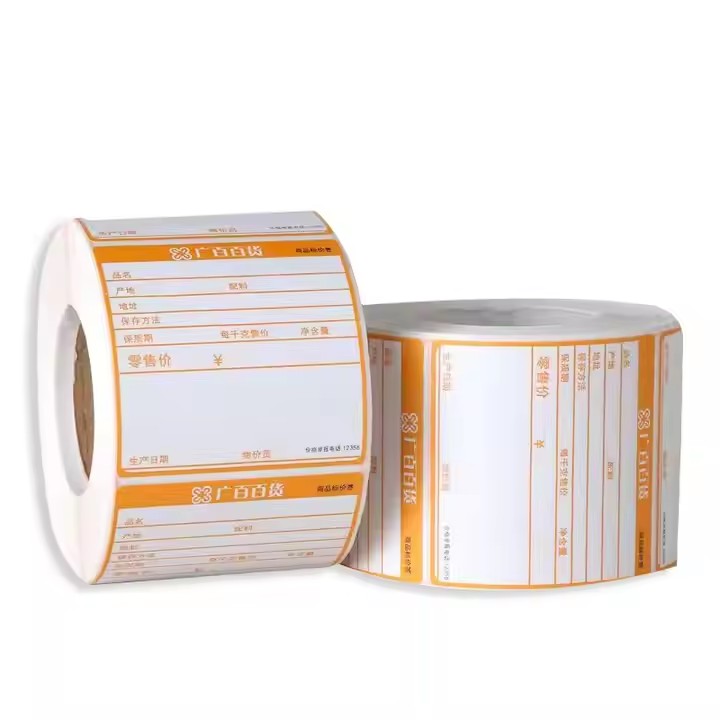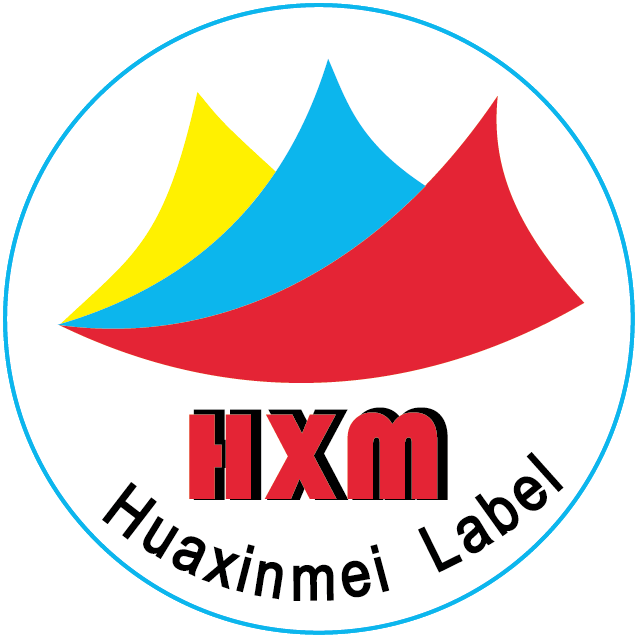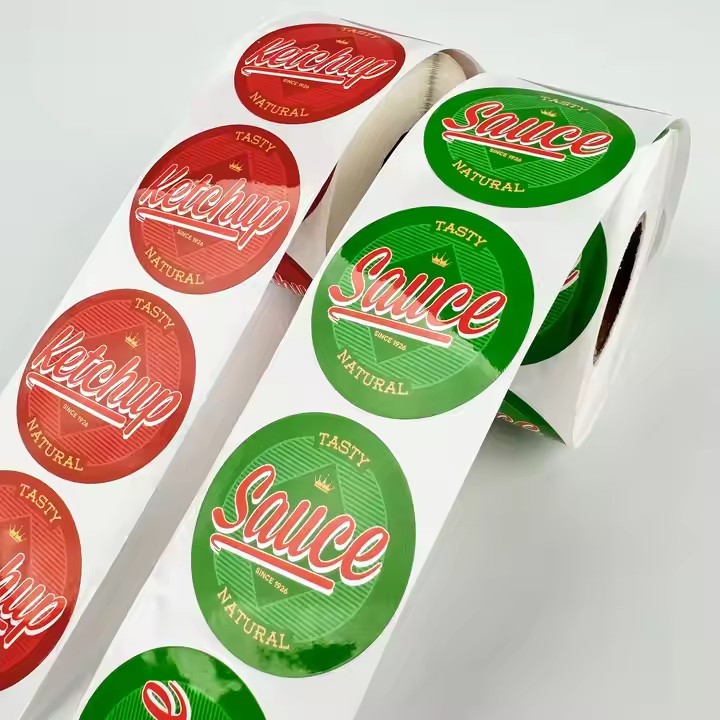Demand Communication
The customer explains to the customization manufacturer the usage scenarios and purposes of the required self-adhesive stickers, such as whether they are for product packaging, logistics labels, or advertising promotion, etc. Clearly define the size, shape, quantity, color, and material requirements of the stickers, as well as whether special processes are needed, such as hot stamping, lamination, etc. Provide design documents or design ideas. If the customer does not have design documents, the manufacturer’s design team can carry out the design according to the customer’s needs.
Design and Sampling
The manufacturer’s designers carry out design layout according to the customer’s needs and produce an electronic proof for the customer to review. The proof will reflect details such as the overall layout, pattern, text content, and color matching of the sticker.
If the customer has modification opinions on the design, the designers will make adjustments according to the feedback until the customer confirms the final design plan.

After confirming the design plan, the manufacturer will produce a small number of physical samples according to the actual production process and materials, allowing the customer to intuitively feel whether the material, color, printing effect, etc. of the sticker meet the requirements. The customer can put forward further modification opinions on the samples, and the manufacturer will adjust again until the customer is satisfied.
Material Selection
According to the usage scenario of the sticker and the customer’s requirements, select suitable self-adhesive materials, including the surface material and the backing material. There are many types of surface materials available, such as coated paper, thermal paper, PET, PVC, etc., and different materials have different characteristics, such as glossiness, wear resistance, water resistance, etc.
The backing material is usually glassine paper or kraft paper, which mainly plays the role of supporting and protecting the self-adhesive. At the same time, it is also necessary to select a suitable adhesive to ensure the sticking effect and durability of the sticker on different surfaces.
Printing and Production
After determining the materials, enter the printing and production stage. According to the quantity and complexity of the stickers, select the appropriate printing method, such as offset printing, flexographic printing, digital printing, etc.
During the printing process, strictly control the color accuracy and printing quality to ensure that the pattern is clear, the color is bright, and the text is complete. At the same time, carry out various post-processing according to the design requirements, such as die-cutting, hot stamping, lamination, varnishing, etc., to meet the customer’s requirements for the appearance and function of the sticker.
Quality Inspection
After the production is completed, conduct a comprehensive quality inspection of the self-adhesive stickers. The inspection content includes whether the size of the sticker meets the requirements, whether the pattern and text are clear and accurate, whether the color is consistent with the sample, whether the sticking performance is good, and whether there are defects such as bubbles and wrinkles.

Inspect according to a certain sampling ratio to ensure that each batch of products meets the quality standards. For unqualified products, carry out rework or re-production in a timely manner.
Packaging and Delivery
Pack the qualified self-adhesive stickers according to the customer’s requirements, which can be in the form of roll packaging, box packaging, or bag packaging, etc. Pay attention to protecting the stickers from damage during packaging and avoid scratching or deforming the surface of the stickers due to friction and extrusion during transportation.
Arrange the delivery according to the customer’s specified delivery method and address. During the delivery process, provide the customer with logistics information in a timely manner to facilitate the customer to track the transportation situation of the goods.
Contract Signing
After determining details such as the design plan, materials, price, and delivery time, the manufacturer and the customer sign an official customization contract. The contract will clearly define the rights and obligations of both parties, including product specifications, quantity, price, payment method, delivery time, quality standards, liability for breach of contract, and other clauses to ensure the protection of the interests of both parties.
Pre-production Confirmation
Before formally putting into mass production, the manufacturer usually confirms with the customer again and sends the final design documents, material samples, etc. for the customer’s final review and confirmation. This step is to avoid any misunderstandings or deviations during the production process and ensure that the produced products fully meet the customer’s requirements.
Production Tracking
The manufacturer will timely feedback the production progress to the customer during the production process, allowing the customer to understand the production situation of the order. If any problems that may affect the delivery time or product quality occur during the production process, such as insufficient raw material supply, equipment failure, etc., the manufacturer will communicate with the customer in the first time and negotiate a solution.
After-sales Follow-up
After the products are delivered to the customer for use, the manufacturer will conduct an after-sales follow-up within a certain period of time to understand the customer’s usage situation and satisfaction with the products. The customer’s feedback is very important for the manufacturer to improve products and services. The manufacturer will continuously optimize the production process and service process according to the customer’s opinions and suggestions to improve product quality and customer satisfaction.

Handling of Special Requirements
Environmental Requirements: If the customer has environmental requirements for self-adhesive stickers, such as using environmentally friendly materials and meeting specific environmental protection standards, the manufacturer needs to carry out material procurement and production according to the relevant requirements. For example, select self-adhesive materials that have passed international environmental protection certifications to ensure that the products are harmless to the environment and human body during production and use.
Special Function Requirements: For self-adhesive stickers with some special function requirements, such as high temperature resistance, low temperature resistance, anti-counterfeiting, removable, etc., the manufacturer needs to carry out special research and development and testing. During the customization process, relevant test reports and certification materials should be provided to the customer to ensure that the products meet the special function requirements.


